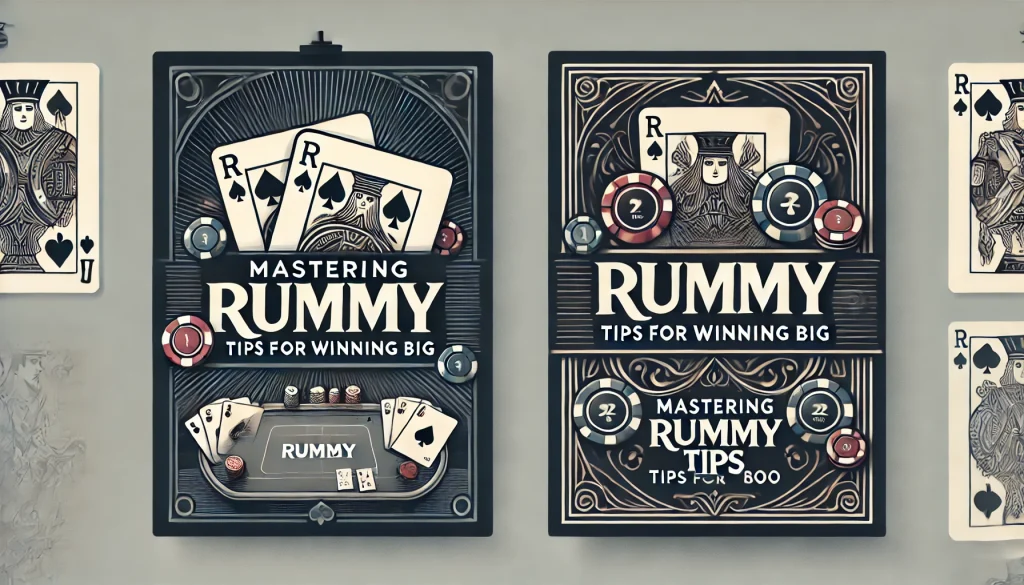Description

Mastering Rummy: A rummy culture Complete Guide For generations, players have been enthralled with the timeless card game of rummy. Because it combines skill, strategy, and a little bit of luck, it is popular with both casual and competitive players. Understanding the rules is only one requirement for success in rummy; other skills include strategy development, opponent analysis, & efficient card management.
This article explores the nuances of 777 slots rummy and offers advice and strategies to improve your play. Rummy is fundamentally a game about creating runs and sets. While a run is made up of three or more consecutive cards of the same suit, a set is made up of three or four cards of the same rank but different suits. Getting all of your cards to merge into legitimate sets and runs before your opponents do is the goal. Depending on the number of players, up to six people can play the game with one or more standard decks of cards. Usually seven or ten cards are dealt to each player, with the remaining cards making up the draw pile.
The discard pile is created by arranging the top card from the draw pile face-up. Each player draws a card in turn from the Classic 777 Slots APK draw or discard pile, after which they discard one card. Until one player successfully melds every card in their deck, the round is over. For any player hoping to get better at rummy, it is essential to comprehend these basic rules.
Apart from learning the fundamentals, players should become acquainted with Rummy variants like Gin Rummy, Indian Rummy, & Kalooki. The rules and scoring schemes of each variation vary greatly, which can have a big influence on gameplay tactics. For example, in Indian Rummy, players must form at least two sequences & frequently use two decks, while in Gin Rummy, players try to form melds while minimizing deadwood (unmatched cards). A competitive edge can be gained by being aware of these subtleties.
Developing a strong strategy that incorporates both offensive and defensive play is essential for a profitable Rummy game. Making meld formation a top priority early in the game is one successful strategy. Players can lower their hand size and improve their chances of winning by concentrating on making sets & runs as fast as they can.
In addition to applying pressure to opponents, this proactive approach enables improved card management as the game goes on. Flexibility is a crucial component of strategy. Players must be ready to modify their strategies in response to the cards they draw and the moves made by their opponents as the game progresses.
Hold onto the cards instead of throwing them away right away, for instance, if your opponent is discarding cards that might be able to help you form a meld. The difference between success & failure may lie in this adaptability. Also, creating a winning strategy requires an understanding of the scoring system. The cards that remain in the hands of opponents after one player leaves the game determine how many points are given in various variations of rummy. Therefore, you can make better decisions about which cards to keep or discard by keeping track of the cards your opponents are collecting.
By being aware of this, you can increase your own scoring opportunities & reduce any possible losses. In rummy, paying close attention to opponents can reveal important details about their plans and tactics. Through careful consideration of the cards they draw and discard, players can learn more about their possible runs and melds. An opponent may be aiming for a run in a certain suit, for example, if they routinely remove cards that match that suit from the discard pile. Also, one can learn about an opponent’s hand composition by looking at their discards. Early discarding of high-value cards by a player could indicate that they are trying to form melds or are aiming for a low-scoring hand.
They may be waiting for particular cards to finish their sets or runs, on the other hand, if they keep them for a long time. Focus and memory abilities are both necessary for this level of observation. Monitoring the cards that have been used can help you predict what your opponents might require in subsequent turns. By using this information, you can decide which cards to keep or discard strategically, increasing your chances of winning. A key component of successful rummy play is efficient card management. A crucial piece of advice is to arrange your hand so that it’s simple to spot possible melds & runs.
During gameplay, organizing cards according to suit or rank can help you make decisions more quickly. This arrangement enables you to rapidly determine which cards can be joined to form legitimate runs or sets. The ability to strategically discern when to break up possible melds is another crucial component of card management. For instance, breaking up a set of three cards that could form a set in favor of pursuing other melds might be advantageous if you are waiting for a fourth card that doesn’t seem likely to appear.
This adaptability lowers the chance of holding onto unplayable cards while creating new chances to form valid combinations. Also, it’s critical to manage your discards. High-value cards should be discarded early in the game to reduce possible losses in the event that an opponent goes out before you. On the other hand, if you believe an opponent is about to win, it may be beneficial to hold onto low-value cards. Throughout the game, careful planning and foresight are needed to strike a balance between these factors.
To increase your chances of creating melds in rummy, you must be able to recognize key card combinations. Because of their adaptability and growth potential, some combinations are more valuable than others. For example, if three cards in the same suit are dealt in a row (e.g. 3.
Not only does 5-6-7 of hearts count as a run, but it also creates the possibility of later adding more cards (4 or 8 of hearts). Also, knowing which card combinations, given the state of play, are more likely to result in success can help you choose which cards to pursue. For instance, if you observe that a number of players are discarding cards from a specific suit, it might mean that you have a lower chance of making successful runs with those suits. It could be prudent to shift your attention to forming sets in these situations. It’s also critical to understand when particular combinations lose value as the game goes on.
For example, if you have two pairs but are having trouble finding a third card to finish either set, it might be time to reconsider your approach and think about splitting up those pairs in favor of attempting other melds that might end up being more successful more quickly. In Rummy, the discard pile is frequently an underutilized resource that, when used wisely, can have a big impact on gameplay. The cards that opponents are discarding should be closely monitored by players, who should strategically utilize this information.
Picking up a card that your opponent discards that you need for a meld not only benefits you but also prevents them from completing their own combinations. Moreover, a bluffing strategy may involve the deliberate discarding of cards. By keeping some cards that could finish your own melds & discarding others that you think your opponent might need, you throw uncertainty into their decision-making process. The game gains another level of strategy from this psychological component. Also, you can determine which cards are still in play & which are probably out of reach by keeping track of which cards have been discarded. As you work to form your final melds, this information enables you to make well-informed decisions about which cards to pursue & which to give up.
In Rummy, knowing when to drop a hand—basically, giving up a round without going out—can be just as crucial as aggressive play. It might be better to drop your hand early rather than risk accruing points from unmelded cards if another player goes out if you find yourself holding onto high-value cards with no obvious way to form melds. The current state of play and the patterns of your opponents should also be taken into account when deciding whether to drop. Dropping your hand early on might be wise if you observe that a player is frequently on the verge of going out or has been drawing winning cards from the draw pile.
You can reduce possible losses and reassemble for subsequent rounds by taking this proactive approach. It’s also critical to comprehend how dropping a hand affects your score. In certain Rummy variations, dropping early could result in fewer points being deducted from your score than waiting until the end of the round to hold onto valuable unmelded cards. You can decide when it’s best to give in by carefully weighing these considerations.
Keeping your cool while playing rummy is crucial for success. Because of the dynamic nature of the game, players may experience moments of excitement or frustration; however, maintaining composure enables them to think clearly and make logical decisions as opposed to emotional ones. Taking deep breaths or engaging in mindfulness exercises during stressful situations can help you stay focused. Establishing a routine prior to each game can also aid in creating a feeling of preparedness & serenity.
These minimal rituals, such as arranging your cards in a particular manner or pausing to mentally get ready before every turn, can improve focus and performance when playing. Also, focusing during the game requires effective distraction management. Whether you’re playing in a noisy setting or up against fiercely competitive opponents, reducing distractions by using noise-canceling headphones or finding a quieter area can greatly enhance your ability to focus on your strategy and observations. Through mastering these facets of Rummy, players can improve their gameplay and get even more enjoyment out of this classic card game, from comprehending the rules and formulating strategies to observing opponents and controlling their emotions.lottery sambad old


